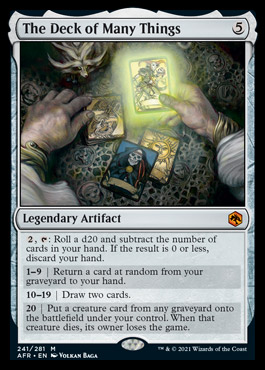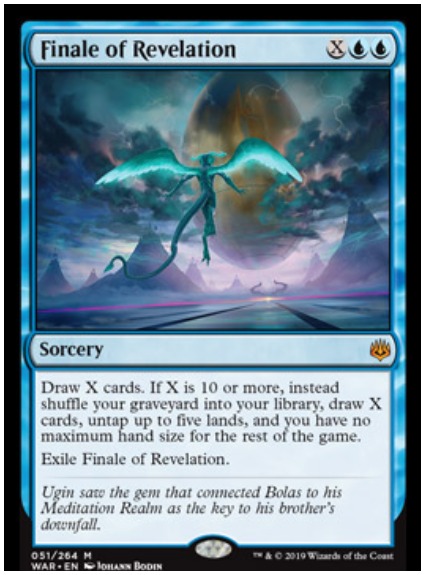

Whereas it’s hard to find time to try out all the cards in the stand-alone, we’re currently giving players the same amount of time to try out well less than half as many cards when we release the other two sets. Nowadays when we look at the size of small sets, the consensus here in R&D is that they are too much smaller than the big sets. Once again, that seems like a reasonable decision to have made back in 1996 when no one was sure exactly how Magic’s future was going to work out, but we ought to be able to make a more informed decision now. Meanwhile, small sets since Visions have had 143 cards each because 44 and 55 were also convenient numbers for collation purposes. To be fair, 330 cards was quite a good guess and it has served us well for many years, but upon further review we now think that’s too many cards. The more we revisited the issue of how many cards should go into each set, though, the more that seemed like the wrong criterion for making the decision. In fact, the reason Mirage had 110 cards at each rarity was because that was how many fit onto a press sheet (and 330 was thought to be in the right ballpark). Finally, in June, we come out with another 143-card set, which rounds out that year’s “block.” When October rolls around again we introduce a whole new block and repeat the process.īack when WotC was trying to figure out how many cards Mirage should have, they didn’t know nearly as much about what customers want as we know now. Then in February we come out with a 143-card expansion (44 rares, 44 uncommons, and 55 commons) that builds on the most recent standalone. It can be played all by itself or you can mix it with other Magic sets if you prefer. Magic’s basic release pattern hasn’t changed since Mirage came out way back in 1996: Every fall we come out with a 350 card set (110 rares, 110 uncommons, 110 commons, and 20 basic lands) which is designed as a “standalone” set. With this in mind, we in R&D recently took a long look at the number of cards we put into each set and decided we want to mix things up a bit. However, it would be a waste of our resources if we were printing so many cards that our audience never got around to trying out all the new cards from one set before the next set came out. Of course, we are ultimately a business and it makes sense for us to print cards however quickly you guys will buy them. Note that you can also sort by collector number using that set sort, and copy the collector number and name to another spreadsheet if you'd like.One of the most common complaints I hear, especially from casual players, is that people have trouble keeping up with Magic because Wizards of the Coast produces too many cards too quickly. Copy and paste it to another sheet to get just the name alone, or paste it to a text document.
Open the CSV file in Google Sheets or Excel. Save the file it gives you as search.csv or whatever name you'd like to give it. rarity, color, price, cmc) listed on that same API documentation page linked above. You can also order it by several other options (e.g. If you want to sort by card number in the set instead, use the set order parameter: DOM, M19, GRN (uppercase or lowercase is fine): Search for the set you're after using the following url, where SET is replaced by the set code, e.g. If you're comfortable working with URLs, you can use Scryfall's card search API to produce a CSV list.

PucaTrade has a list of every Magic expansion set, and each of those links goes to a page that lists the name of each card along with the expansion symbol colored to indicate rarity.

However, these lists appear to only go back to Urza's Saga, so if you need the earliest sets, you'll need to look elsewhere. For each card, it lists just the Name, with box or two next to it. The Wizards Play Network has deck checklists for each set, which appear to be intended for use in limited events, but you could print them out and use them however you want. This page also lists all of the sets in reverse chronological order, to easily find the one you want. This output can be formatted as a checklist, which shows a variety of information about each card. Scryfall allows you to search by expansion with the search text set: or by using the advanced search. If you choose the output format "Checklist", the results page will be a list of cards with Collector's Number, Name, Artist, Color, Rarity, and Expansion Set for each. Gatherer Advanced Search allows you to search by expansion. There are multiple places to obtain set checklists that approximately match your description:


 0 kommentar(er)
0 kommentar(er)
